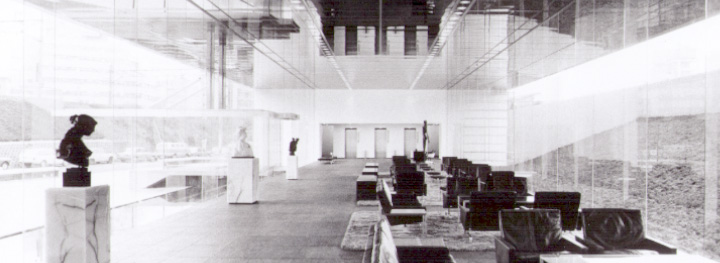Art & Art History
NIKKEN SEKKEI: Its Ninety Years and the Modernization of Japan

Gallery 400
400 South Peoria Street, Chicago, IL 60607
NIKKEN SEKKEI: Its Ninety Years and the Modernization of Japan features works by Nikken Sekkei, the oldest and largest architecture firm in Japan. Although little known in America, in Japan Nikken Sekkei is highly regarded not only for the quality and influence of its built work but also for its advanced research in construction technology and innovative management of complex design projects. The origins of Nikken Sekkei date back to a predecessor firm established in 1900 to provide Sumitomo Bank with a headquarters building designed in the neoclassical style and constructed using the latest in Western technology. Today, Nikken Sekkei employs a staff of 1,500 architects, planners, and engineers. Projects range from corporate headquarters to public housing, from private museums to the world’s largest and most advanced cyclotron.
Beginning with the landmark Osaka library of 1903 and ending with recent overseas projects like the Islamic Development Bank (Saudi Arabia), the exhibition presents a selection of forty projects arranged chronologically on forty panels. Panels include introductory text describing the period in which the projects were designed, as well as photographs and drawings documenting the projects themselves. In this way, the exhibition establishes the historical parallels between the growth of Nikken Sekkei and the modernization of Japan. These parallels are shown in successive phases from 1900 to the present: Meiji’s importation of Western technology and eclectic styles; political liberalization and Japanese development of European modernism; nationalism and the Imperial Crown style; the Pacific War and heavy industry; postwar reconstruction and urbanization; the “economic miracle” and megastructures; high technology and the revival of the Japanese tradition.
This exhibition is accompanied by a monograph by Botond Bognar, Kenneth Frampton, and Sandy Heck, with additional text by Kunio Kudo, which offers the first comprehensive look at the critical relationships between modern Japanese history and Japan’s leading design office: Nikken Sekkei. The exhibition was curated by Dr. Kunio Kudo, a professor at Columbia University Graduate School of Architecture Planning and Preservation. The monograph was published by Princeton Architecture Press, New York.